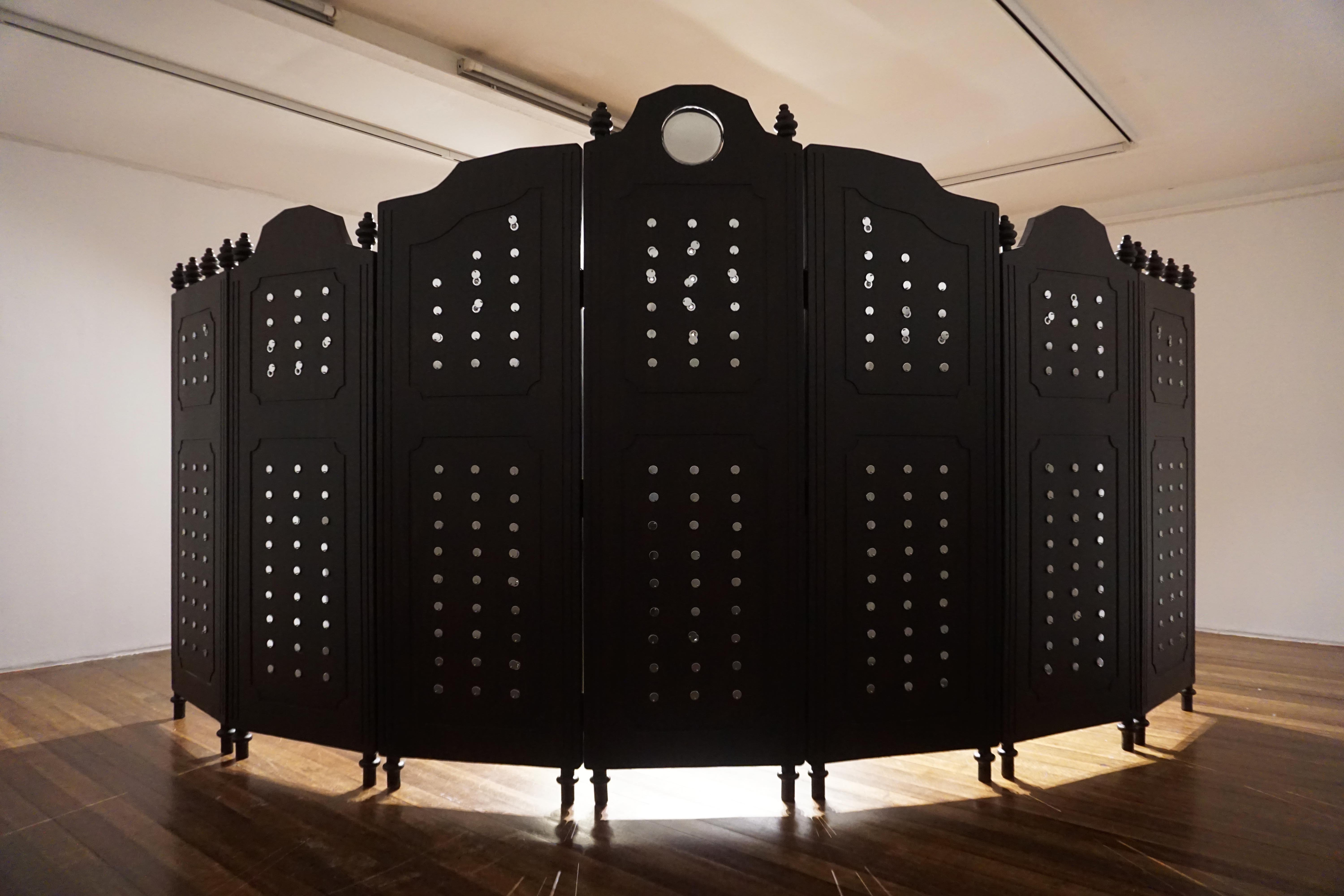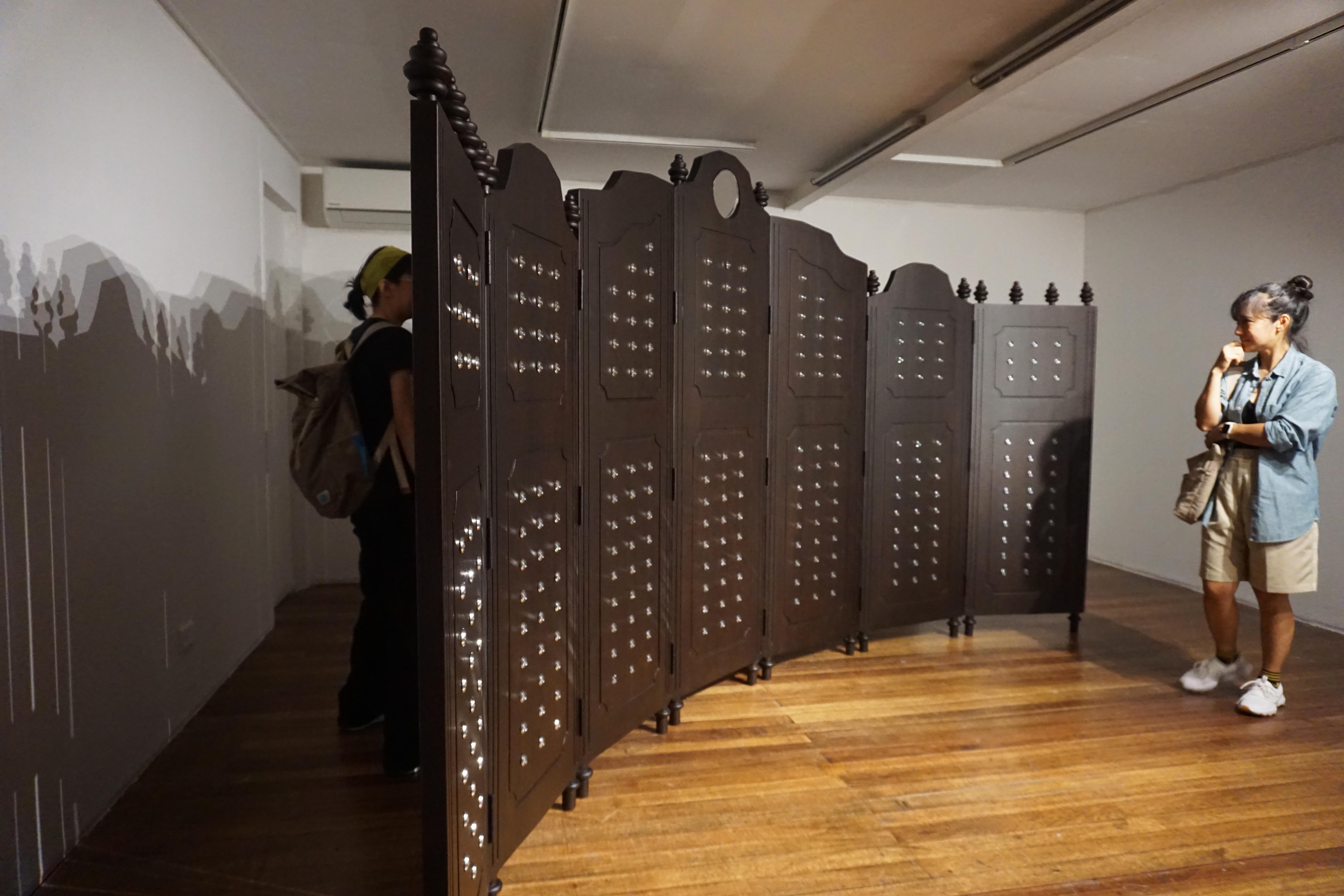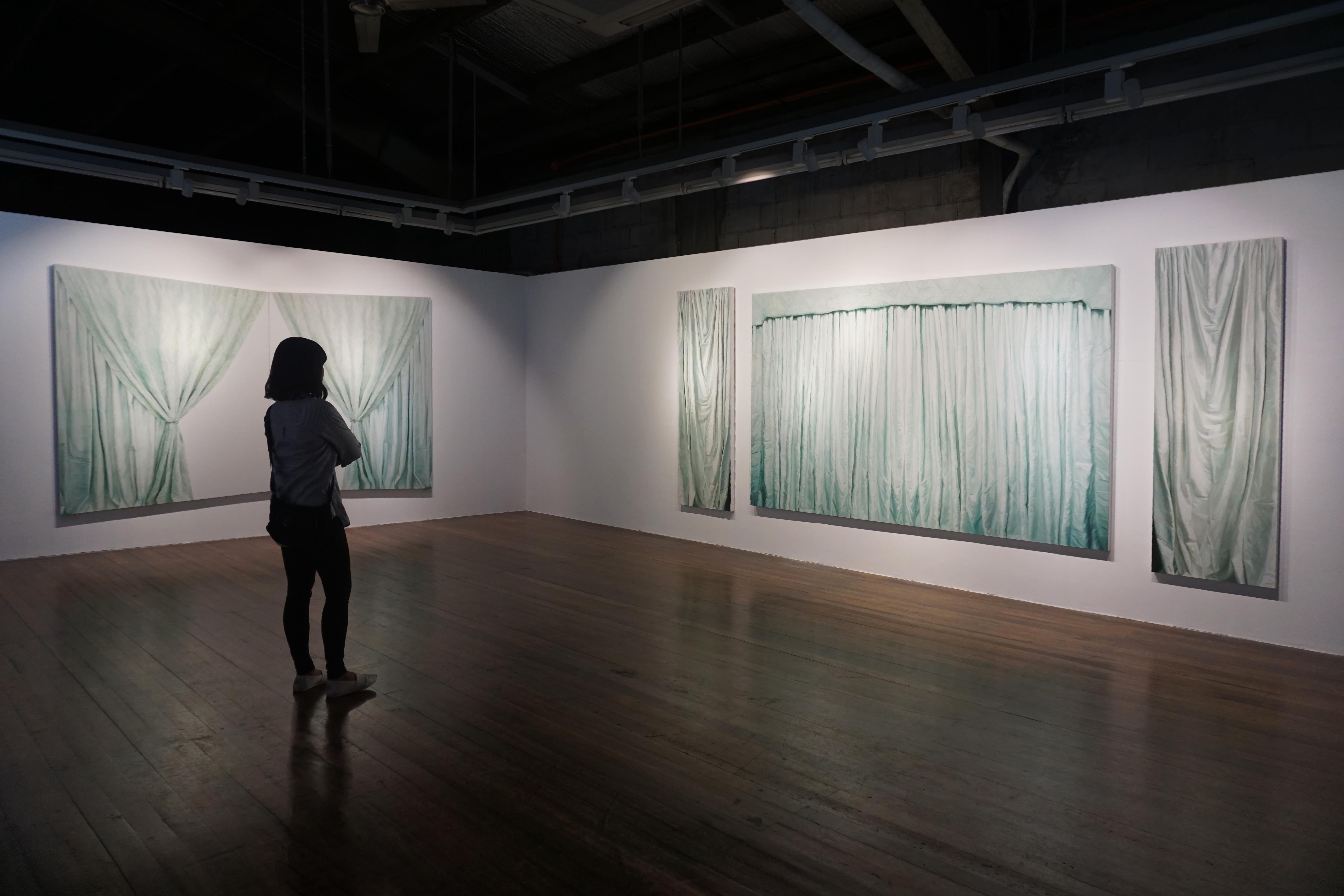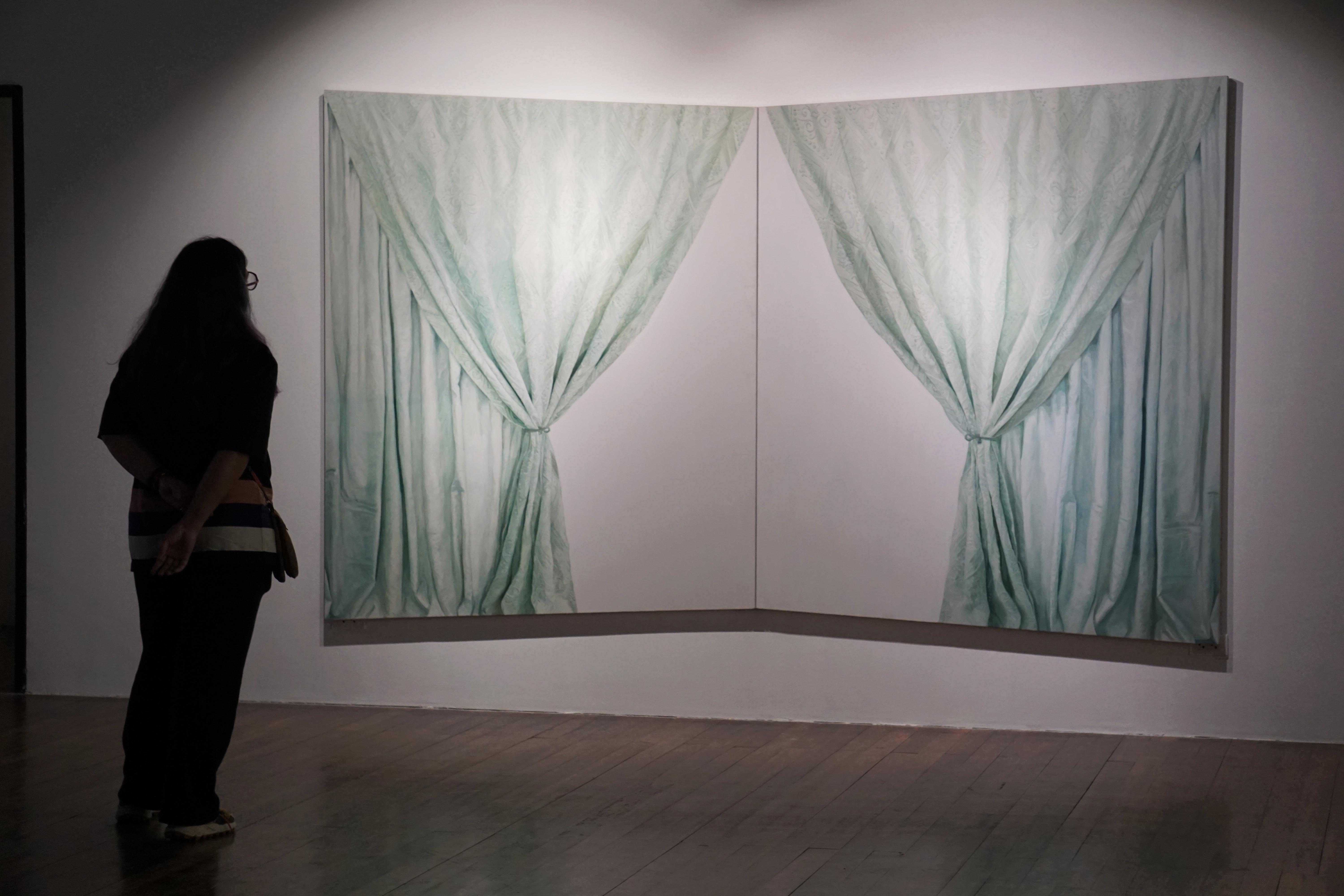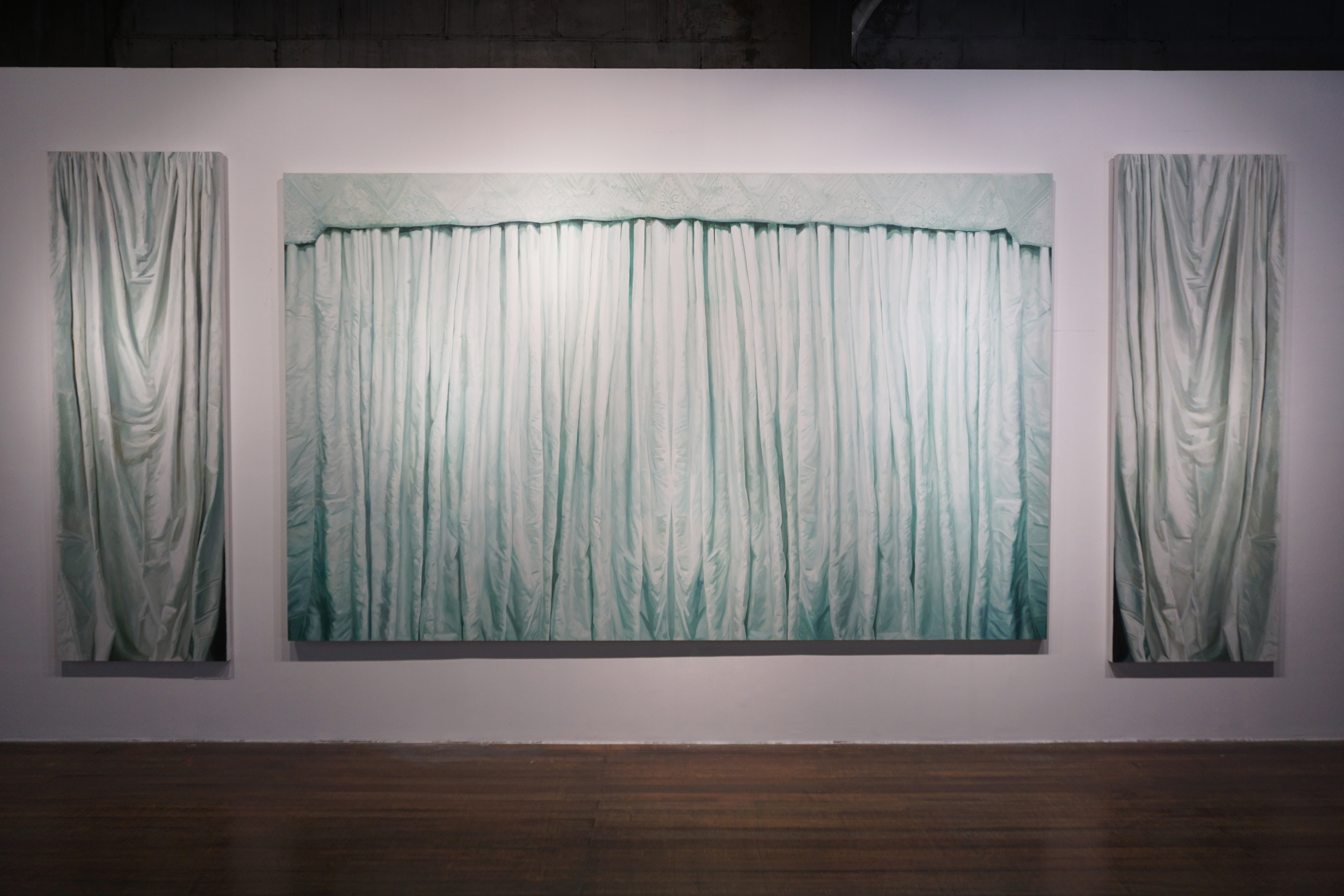Behind The Scenes (Solo Show) / Finale Art File / Makati City / 2024
![]()
![]()
Under The Limelight , Diptych , 2024, oil on canvas, each panel: 6 x 5 ft
![]()
Left to Right:
Hidden Acts , 2024 , oil on canvas, 6 x 2 ft
Curtain Call , 2024 , oil on canvas, 5.5 x 9 ft
Whispers , 2024 , oil on canvas, 6 x 2 ft
![]()
![]()
Open Eyes, 2024 , 7-panel wooden divider with mirror and 279 peepholes, 6.5 x 14 ft
![]()
![]()
Behind the Scenes
i. staging a world: a performance, a real event
In a series of paintings, the exploration of stage design takes on a new dimension that diverges from the conceptual rigor of Audrey Lukban's previous works, focusing on the immediate and visceral connection with the audience. While there's an apparent shift in the aesthetic quality of her paintings- from using purple to employing a tinge of green- the underlying theme remains: life as a stage where our motivations, and eventually our actions, are influenced by external forces and when put under the pressure of prying gazes. Her new collection is a continuation of this dialogue with makeshift curtains, blending the personal with the universal in producing images.
Here, the works emerge from a subconscious connection to the artist's own experiences and surroundings. Lukban's introspection is realized through the use of motifs she derives from her ongoing fascination with stage design. Her paintings of green curtains signify a departure from a place of comfort as she starts anew in an environment that is unfamiliar, and perhaps completely foreign to her. Her shifts reflect a deeper sense of transition and self-reflection that has become more apparent in her approach to meaning-making, engaging the viewers to ponder the boundary between performance and reality. Behind the Scenes significantly marks an end and a beginning in her mode of painting.
ii. an all-surveilling state
Audrey Lukban's interest in the idea of surveillance extends beyond the conceptual to the material. Her installation of wooden dividers, meticulously constructed with numerous peepholes, makes the utilitarian household staple obsolete of their function to conceal and place something out of sight, seeing through partitions that configure our designated private spaces.
By manipulating not only the material, but as well as the functionality of the object, Lukban prompts the viewers to redirect averted gazes to traverse across public and private spaces.
This creates tensions in the perceived sturdiness from which visual barriers are constructed — revealing flimsiness of the material through penetrating gazes.
The peepholes like omnipresent eyes reiterate Lukban's profound commentary on intimacy and the act of observing, bringing focus to the anxious emotion of being watched without full awareness of the act. Her latest installation, a continuation of a series that draws on elements found in traditional Filipino home decors, becomes a critique on personal and societal pressures that stem from the creeping fetishistic gaze behind these partitions, where sights are no longer obscured nor hidden.
Lukban acknowledges the ways in which our built environments and societal norms shape our sense of security, often connected to our concept of privacy. It is through the omnipresent gaze that she recognises the power of seeing beyond the constructs we surround ourselves with. One is encouraged to peep through the other side.
-James Luigi Tana
![]()
![]()
![]()
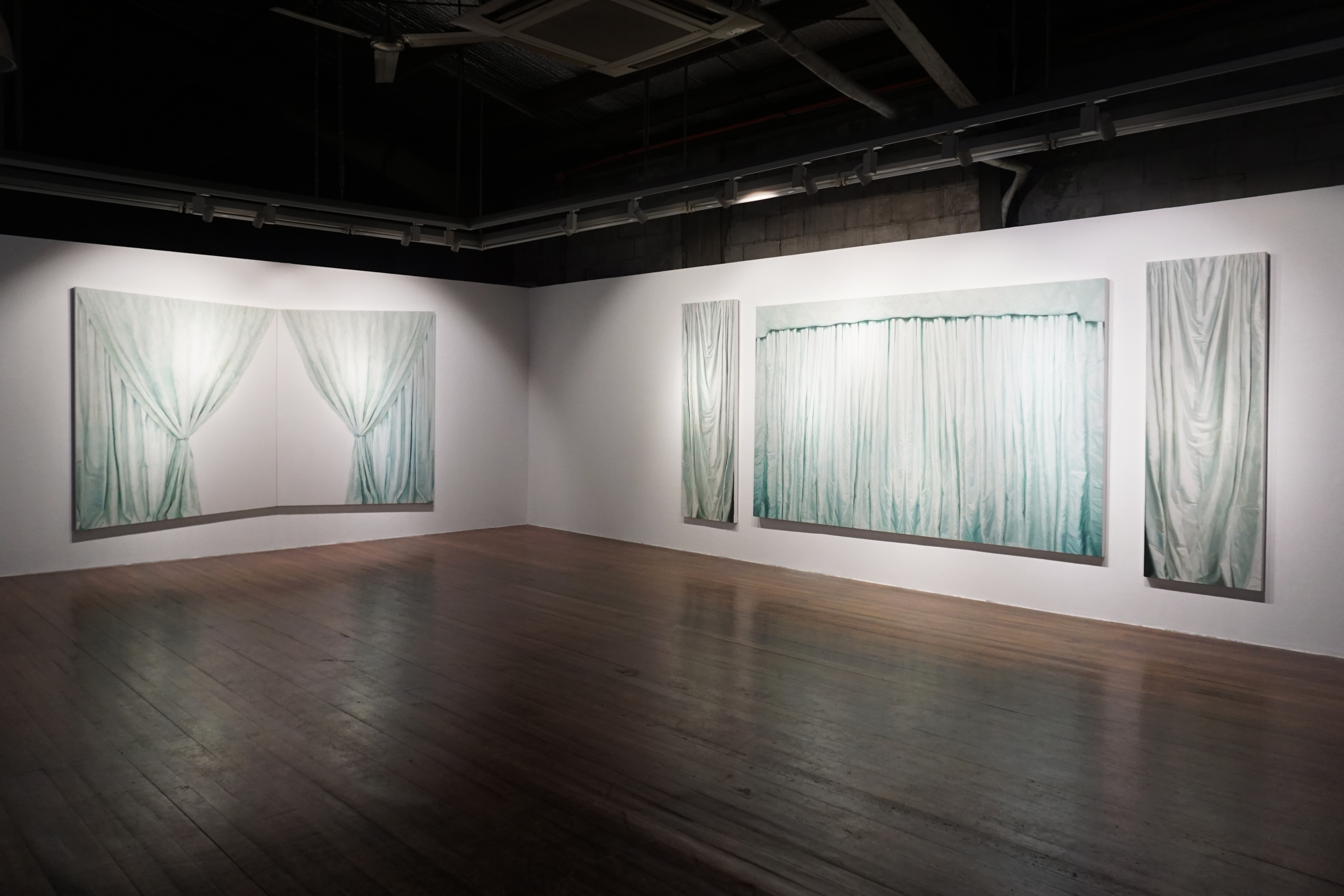
![]()
